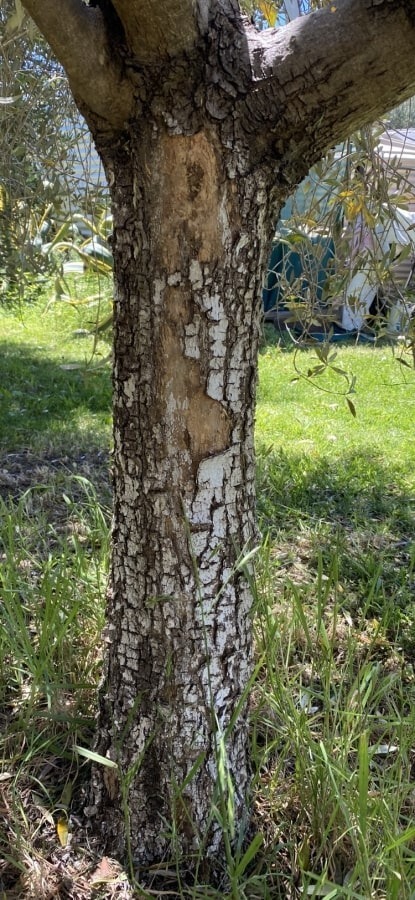
Olive trees are well adapted to hot and dry Mediterranean climates, but even they can suffer from sunburn (also called sunscald) when exposed to intense sunlight, heat stress, or when bark that was previously shaded becomes suddenly exposed. In mature or neglected/abandoned groves - especially those with heavy pruning or thin canopies - the risk can increase significantly.
Sunburn damage weakens trees, opens the way for pests and disease, slows growth, and in severe cases may lead to branch dieback or decline. It’s worth recognising early and managing before the damage becomes irreversible.

Sunburn Damage to Olive Tree Trunk -The image above shows classic symptoms: cracked, peeling bark and exposed wood.
Here are key symptoms to watch for:
One important effect is that sunburned bark is more vulnerable to pest and fungal invasion, such as wood-boring insects or opportunistic pathogens that exploit the compromised protective barrier.
Because olive trees often live many decades, even older trees can sustain recovery—provided the damage is not too extensive and you intervene early.
Here’s a set of strategies you can apply now or over seasons to protect your olive trees and help heal existing damage.
1. Maintain or restore shade to the trunk
Sunburn appears as pale, bleached bark patches on exposed trunk surfaces, cracks or peeling bark, and sometimes sunken or depressed bark areas. In advanced damage, bark may fall off, leaving wood exposed. Leaves near the margins of canopy may show browning or scorching, and fruit may drop prematurely under heat stress.
If you can, have a sample branch punched from just beyond the edge of the sunburn area so an arborist or consultant can evaluate whether live cambial tissue remains. Also, map out which exposures (north, west, etc.) in your grove tend to show sunburn more often—this helps plan protective shading or wrap strategies.
As you re-establish your grove’s health in other areas (soil fertility, drainage, pest and disease management, good pruning), protecting against sunburn becomes part of the maintenance process rather than a standalone issue.